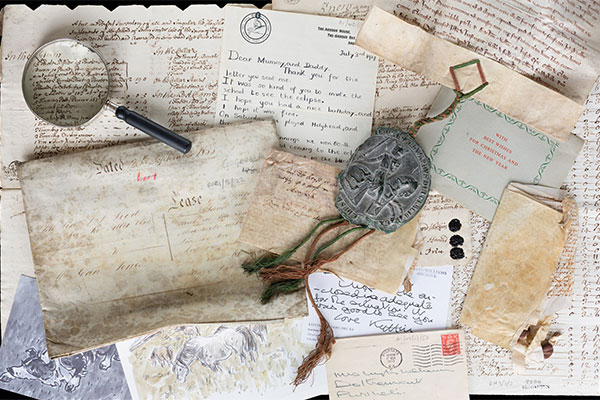History of the manuscript
It is known that, by the beginning of the 14th century, the manuscript was at St Augustine's Abbey, Canterbury. The evidence for this comes from one of two pastedowns preserved at the end of the volume. These are all that remain of the original 'old oak boards binding' seen by J. Gwenogvryn Evans at the end of the 19th century, when it was still at Peniarth, Merionethshire. One of these bears the press-mark of the library of St Augustine's Abbey, Canterbury, and the name of the donor, now partly illegible but interpretable as that of William Byholte (fl. 1292-1318), prior of the abbey. It is also thought that this was the copy of the Welsh laws consulted by John Peckham, archbishop of Canterbury, 1279-94, when he sent his letter to Prince Llywelyn ap Gruffudd in 1282, denouncing the prince's morals and those of the Welsh, and in which he makes two references to the Laws of Hywel Dda.
The manuscript was still at Canterbury at the end of the 15th century, as 'Leges Howelda Wallici' appears in the catalogue of the abbey's library compiled c. 1491-7 (Dublin, Trinity College Library MS 360). Its subsequent history, however, until its acquisition by Robert Vaughan of Hengwrt, is not known. The library catalogue once belonged to the astrologer Dr John Dee (1527-1608) and alongside the above entry, Dee has written 'Leges Howelis Da'. It is known that Dee acquired many manuscripts from St Augustine's, Canterbury, but there is no direct evidence that Peniarth 28 was one of them.




